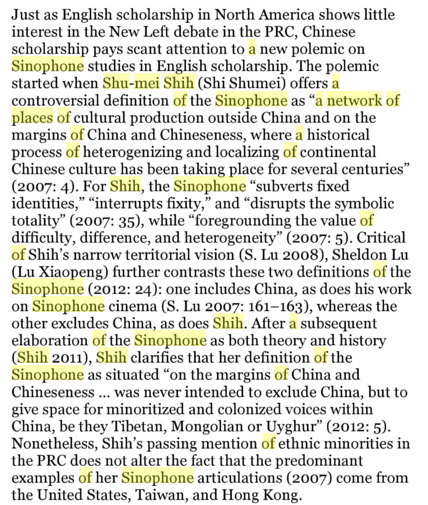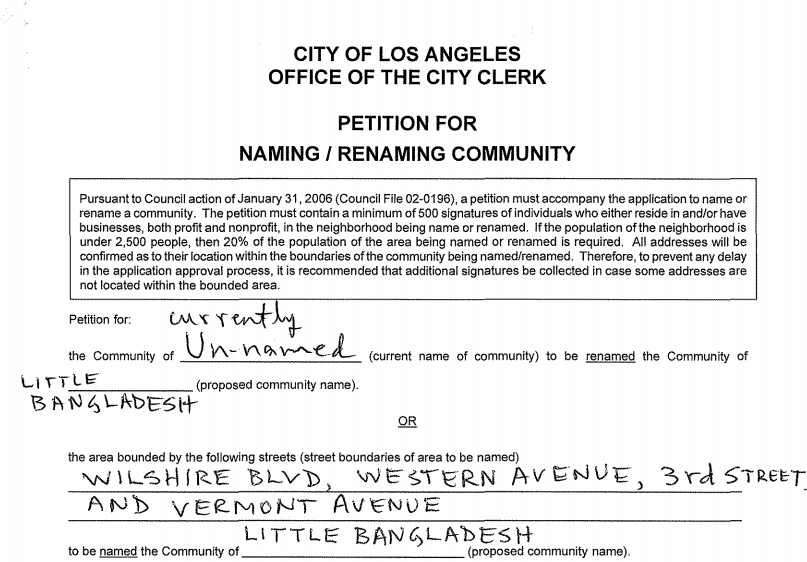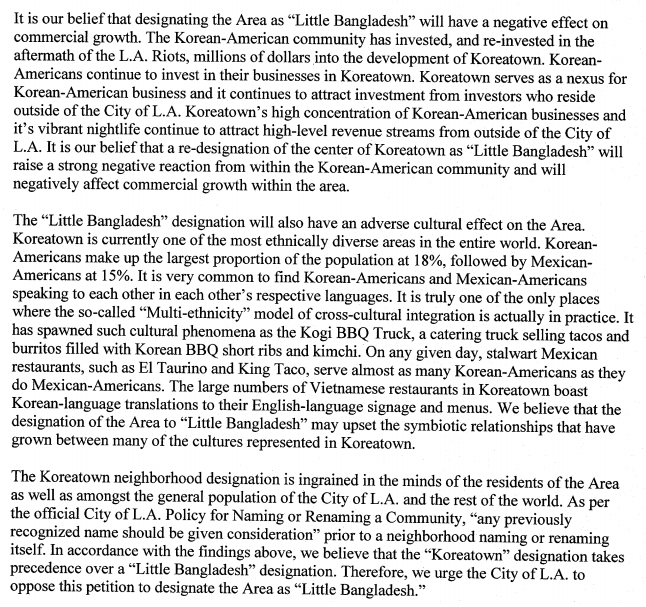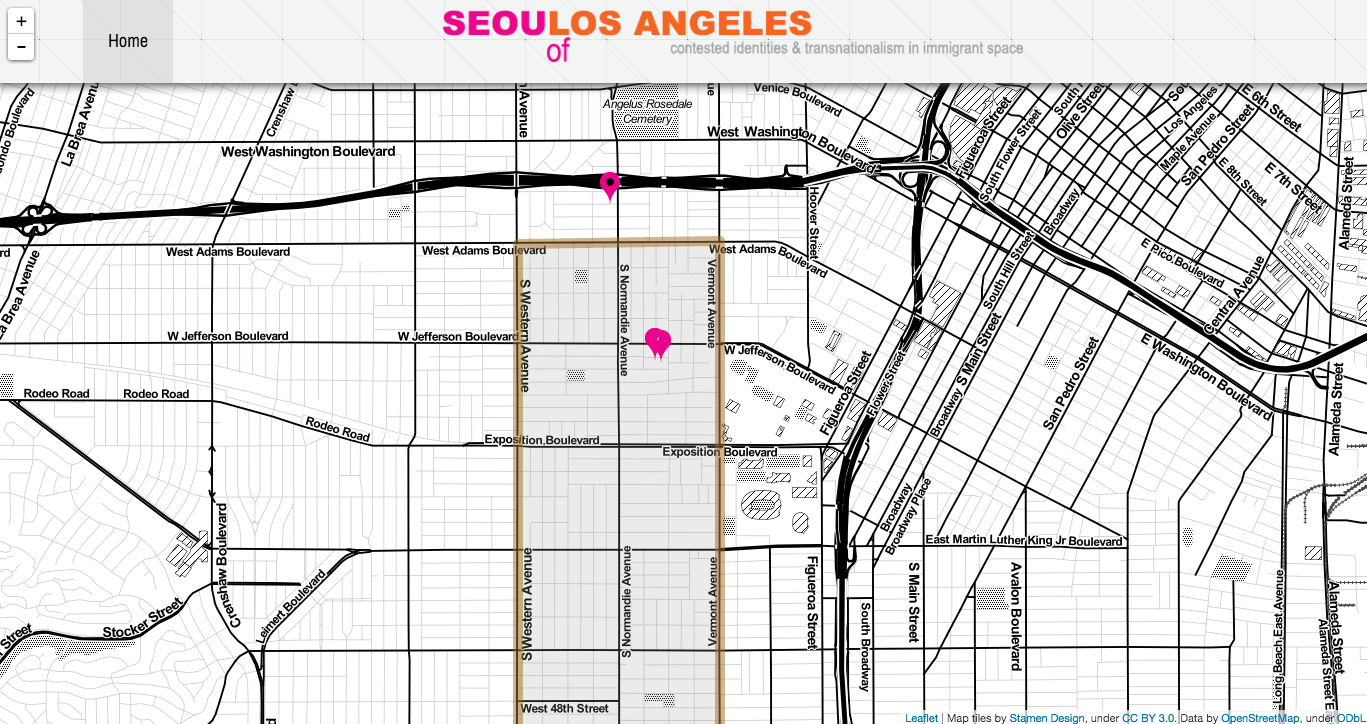Hard State, Soft City Conference
https://ari.nus.edu.sg/Event/Detail/7cf552ea-e88e-43a9-a69b-b6f73685ea71
this conference has taught me the difference between area specialist and generalist
Contents
- 1 17 March 2016
- 1.1 Wee Wan Ling, On the Contemporary and Contemporary Art: Culture and the 1980s in Singapore
- 1.2 The Singapore Freeport as Schrodinger's Cat
- 1.3 weng choy, The Address of Art and the scale of other places
- 1.4 q&a
- 1.5 Chain of Creativities: For 'the Era of Creative Citizens' / Motohiro Koizumi | Tottori University, Japan
- 1.6 Floating Projects
- 1.7 q&a
- 1.8 Peripatetic Singapore - Lai Chee Kien
- 1.9 Forming Cityscapes: An Ongoing Photographic Project / kong wen da jamie yeo
- 1.10 q&a
- 2 18 march 2016
17 March 2016
not really a summary so much as random notes taken whilst listening
Wee Wan Ling, On the Contemporary and Contemporary Art: Culture and the 1980s in Singapore
- gap btwn notion of contemporary and contemporary art in sg
- periodisation: 1980s
- disjunctive states / the state would need to “invent contemporary art” in order to prove it was not a cultural desert
- leading to a post medium condition of the arts
- two strands observed? - 1 conceptualism / statement making 2 activism / realism
- not mutually exclusive but having shared concerns
- what does the post colonial imply for artistic production
- commitment to development not separate from cold war
- Not the Singapore River organised by Arbour Fine Arts, susie queh, tang dawu earthworks notions of the i-ching
The Singapore Freeport as Schrodinger's Cat
- Freeport as art hub as imagined regional market - imagined conduit and site for wealth accumulation
- nomadic capital
http://conversations.e-flux.com/t/freeportism-and-post-internet-art/3343
It is safe to say, however, that never before now have so many artworks been produced to remain hidden, all enclosed in disenchanted wooden boxes, suspended in a permanent circuit of exchange, in a place called a “freeport” because it is free of customs duties and taxes of all kinds. Since no one is allowed to see the art, it is also free of audience and spectators, an anti-theatron; it is a place of un-seeing. We must examine the conflict between the forces that create new ways of representing and being seen, and the relations that just as quickly place these out of sight...
The term “post-internet” did not spread because it was well defined. On the contrary, its ambivalence and its openness allowed it to resonate widely. Its prefix “post-” is borrowed from notions like the “postmodern” or the “post-digital.” “Post-” used to mean “after,” but now it also includes “beyond” and “deriving from.” It confirms and denies at the same time, exerting a kind of double bind. It says: we belong to the internet, knowing that the internet is over. We are digital, but it does not matter, because that is just what everybody is. “Post-” also presumes to know the border of something: post-internet means we believe that the end of the event called “the internet” is somewhere in sight, in the same way that postmodernism served first of all to consolidate modernism into something we could have conceivably moved beyond.
Post-internet represents the latest episode in the long trajectory of artistic responses to shifts in the forces of representation and the evolution of media technology. We can characterize these responses in one of four ways: 1) the aforementioned metaphorical appropriation; 2) “technologism”; 3) tech-derived projects and practices, or “derivatives”; and 4) tech-related projects and practices, or “relatives.”
- Pinacotheque de Paris in singapore / blue chip art / increase cachet / bouvier figure ("butler of the art world" - take over the movement of art)
- http://www.bloomberg.com/news/articles/2015-04-27/a-186-million-rothko-pits-russian-tycoon-against-art-merchant
- "legal trapeze"
- The Heavens LLC - http://www.theheavensllc.com/
- "no inventory in the freeport"
- FREEPORT EXEMPTION INVENTORY
Comment for kat & robin:
- DONT APOLOGISE
- SLOW DOWN!!!!!!
- TEXT TOO SMALL!!!!
- speak into the mike... no waving it around........
- the sharp sighs of people seeing a slide full of words their heads supported by their arms = exhalation in preparation for inhaling the dense mass of words?
- my interest lies more in "culture of interpretations" / poetics as means for understanding complexity
weng choy, The Address of Art and the scale of other places
http://www.businesstimes.com.sg/lifestyle/arts-entertainment/artists-without-borders
- The Address of Art and the scale of other places
- a quote taken out of context Helms on Heman: "Art history has less and less of a hold on the scene, and critics don't matter anymore ... People are being influenced by things at a much faster pace, and what you put out can be seen on Instagram immediately anywhere in the world.” - http://www.businesstimes.com.sg/lifestyle/arts-entertainment/artists-without-borders
- singapore’s anxiety defines it more than its aspirations?
- is singapore good enough? it yearns for arrival on the world stage.
- but this. does it result in the erasure of place?
- How can a singapore artist be famous as a Singapore artist?
- “Local"?
- Address - a thing to speaking to but also about the local. one addresses ____
- how to teach history - the past or the present
LWC - Consider these two hypothetical classes in history: in one, the teacher prepares the students to go on a trip to the past, as if it were a foreign country;12 in the other, the teacher guides the students through the present, showing them signs of how history is still everywhere, there to be read by the attentive seeker — as if the proper tense of “history” is “now.” For me, thinking about the contemporary is very much a detour into thinking about history, about the fullness of our present moment. In contrast, when one looks at cultural policy discourse in Singapore, one can see how future-predicated it is as if the nation is in such a hurry to get to the next stage....
- cultural decline
- stuart hall
- TOO ANALOG TO BLOG http://www.art-it.asia/u/ab_leewc/BxJ0FgH3Glm7YZfqpA2S
- the ghost voice of lee weng choy..... the real man muted in right hand corner of the screen... speaking of broadcasting.... "I can't be heard" message hah
- consider the person browsing a bookstore / contrast with everyday social media/ the latter = transactional economy (i give u attention if you give me attention)
- scale is about being in the world. different places have different scales.
- the true purpose of literature is to provide images that will come back to you, if you are so lucky as to grow old.
- role of art = reminds us of profound otherness. it is a public endeavour. sincere acts of individuals reaching out.
- allowing digressions
- the late david wallace foster said: “There are these two young fish swimming along and they happen to meet an older fish swimming the other way, who nods at them and says "Morning, boys. How's the water?" And the two young fish swim on for a bit, and then eventually one of them looks over at the other and goes "What the hell is water?”
q&a
- where does critical thinking about art exist in singapore? (wanling says you have to do it if you want to reach to the international? also his point of his paper is to highlight the delayed period of contemporaisation) (art luxury item??) (kath and robin: where does capital come into art? capital enables people to do work. so when you talk about how money flows, it functions outside of art history)
- qn about context and art criticism as production - training in art history/higher education sector offshore. mobility. &&& (finance workers saskia quote). the freeport does not know what is inside itself. (the freeport > LE FREEPORT , proliferation of freeport is beyond singapore.
(weng: quantity of art in cultural policy. gap in how cultural policymakers consider the value of writing or thinking about art. its just "encountering" the art.)
- qn about where are people producing art. (weng: spaces are created. latent spaces. see jason wee grey projects) (jason: not about place as infrastructure / the issue is that infrastructure is a provision from the state / infrastructure as control and regulation, more interesting is then alterspaces and writings on own / not under infrastructural radar.) (emily: ripples from the floodgates of capital flooding in. "could you speculate on the look of future art-as-capital?" && MY QUESTION OF WHY DOESN'T K+R/OFFSHORE MAKE WORK..... Goldin+Senneby headless abstractions how do you represent these abstractions? A: fictional narrative B the body the human. (in this case a SOFT state, very flexible?)
- artists mainly dont deal with superstructures.... because most people dont deal with superstructures.
- "investment in the arts"
- Asia Society
- wan-ling - "do we want to go back to a pre-biennale state" modern exotic problematic. but we shouldn't romanticise it before.
- comment on bad painting / bad collecting - blue chip - almost guaranteed to grow as asset (eg european modernist) - doubling the value of things after institutional show - museums with their 6 month clause.
- cost on arts also a lot of it goes into architecture. have big building, can justify by saying it intends big audience
- kwa chong guan - as a hard state of singapore aspires to wards global city state, is there a need for soft cultural component? how many galleries, theatres, artists do we need? how do we fund it (the question at 90s) how are the artists reacting to aspirations?? there are a few
- qn abt consumption in superstructures.
- weng: consumer VS audiences VS publics / kinds of KPIs --> worth for policymakers to say.
- kpk pointed out in 1992 about theatre and esplanade. remove the medium size theatre to make big one. then the only options are black box studio and massive hall. where is the middle size institution then?
- chua beng huat pointed out last of all that there is sports hub + sooccer in singapore no one interested
SQUARE PEG IN ROUND HOLE???
Chain of Creativities: For 'the Era of Creative Citizens' / Motohiro Koizumi | Tottori University, Japan
- autonomy of the artist?
- creative citizenship
- stuart hall
- as new notes are played a new chord arises
- inserting new soutnds into dissonance
- one model : artist --> work --> viewer
- another model: art project as dialogue table
- soft power theory joseph nye 2004
- richard florida creative city theaory 2002
- problem in flordia's model is the absense of perspective of inquiring where the source of creativity that revitalises the city comes from (bucholz 2011)
- too much emphasis on creative class
- art > social revitalisation > who benefits? only the people in the area. tourism.
Floating Projects
Linda Lai - Floating Projects, Survival Re-envisioned: Spatial Occupation, Re-producing Social Relations and the Economy of Contribution
http://floatingprojectscollective.net
- floating projects - space for experimentation media art
- Spatial Pressure Calibration - Concert
- WIP Inspection - EXHIBITION
- hito steyerl quote
- affirm arts dialectical association with society
- art as object of management
- space is tied to being and sense of spatiality
- art is part of social system but capitalist logic >
- one has lost one's own subjectivity
- "art must not give up being society's place of radical thinking"
- we should seek to recreate our relation to life
q&a
- linda lai - funding schedules limits production of art?
Peripatetic Singapore - Lai Chee Kien
how has the city become less walkable?
From 1965 to 1995, the late architectural historian Lee Kip Lin took over 15,000 photographs of Singapore’s streets, landscapes and residential homes. As a member of the Preservation of Monuments Board in the 1970s, Lee captured at-risk areas to demolition, and building types deemed everyday but which had value to the study of architectural history. At a time when drones were not available, Lee’s photographs of entire areas, ironically taken from skyscrapers built over old establishments, present much material for the study of conservation and transformation of the city in general.
gems:
- "i won't call it chinatown cos thats the tourism term"
- by classifying specific types, were different or odd types reduced in importance?
- "fabric of the city" / plots sold off enmasse / taking away erstwhile 'edges'
- after changing the edge, changing it with boulevard projects with trees > loss of street that old shop houses
- looking at shophouses now everyone wants to maximise use of 5footway
- increasing use of motorised vehicles including motorised vehicle + wheelchairs + old lady wheel bag + bicycles....
debbie thoughts
- lee kip lin's photos are amazing
- messy block edges replaced by boulevards
- on the designed flatness of our landscape > which has made motorised vehicles ok (in london, council slabs make it lumpy!) > lifts, connectors
- "connectors"
- park connectors have played a major role in making walking and cycling in Singapore as popular as they are today.
- http://www.straitstimes.com/singapore/singapore-park-connectors-reach-300km-at-25-year-mark
- Residents in Hougang will now be able to cycle directly to Punggol and Kallang, thanks to the completion of the new Hougang Avenue 3 Park Connector.
- Round Island Route
- steps / places to stop
- We have more than one connections/routes running in parallel. Why was it designed this way?
Forming Cityscapes: An Ongoing Photographic Project / kong wen da jamie yeo
- "design opportunity"
- nodes / networks of information
q&a
- photography creating the city
- awkward - i am not sure the two designers' position within the city?
- objectivity in painting and photography
- visual language
18 march 2016
singapore songlines revisited the world class complex
- mark frost a postcolonial historian
- rem koolhaus moment when coming back to SG > http://leewen.republicofdaydreams.com/world-class-society.html
- lee wen intoning we are a world class society
- is this a product of the colonial gaze
- https://en.wikipedia.org/wiki/Lim_Boon_Keng
- lim boon keng on the remedy for baba mental deterioration - "removal from the tropics even for a short time is desirable. the social atmosphere must be purified. a proper system of moral educationfor the home must be instituted, and every one must be instilled with the highest ideals of the race." - race deterioration in the tropics 1909
- problematic as the rationalist movement is wiping clean, anti superstition, anti fengshui, rational rememberance only.
- attack on rights of belonging and peranakan community (lim doesn't want the baba to speak malay, but instead english)
- set up SCGS > to educate nyonya girls out of their nyonyaness
- LKY> air conditioning > most important here, signal invention. changed the nature of civilisation by making development possible in the tropics.
Narrator: For someone born and raised in a place close to the equator, Lee Kuan Yew is strangely averse to heat.
Interviewer: The greatest invention of this century must be...?
Lee Kuan Yew: The air-conditioner, for me. (laughs)
- LKY's Economist obit http://www.economist.com/news/asia/leekuanyew
A cool guy In some ways, Mr Lee was a bit of a crank. Among a number of 20th-century luminaries asked by the Wall Street Journal in 1999 to pick the most influential invention of the millennium, he alone shunned the printing press, electricity, the internal combustion engine and the internet and chose the air-conditioner. He explained that, before air-con, people living in the tropics were at a disadvantage because the heat and humidity damaged the quality of their work. Now, they “need no longer lag behind”. Cherian George, a journalist and scholar, spotted in this a metaphor for Mr Lee’s style of government, and wrote one of the best books about it: “The air-conditioned nation: Essays on the politics of comfort and control”. Mr Lee made Singapore comfortable, but was careful to keep control of the thermostat.
- dream of malaya
- quote from 50,000 Up 1965
(found inside Beyond Description: Singapore Space Historicity edited by Ryan Bishop, John Phillips, Wei-Wei Yeo)
- what happened after the dream of malaya was over? post 1965?
http://eresources.nlb.gov.sg/history/events/a5ea5bc9-2ea4-4dfc-b53d-ba45b567104c
- s. rajaratnam the club of global cities
hub
singapore? singa pura? - sinophone as lyrical aesthetic redefined
&&& INSERT IMAGES FROM PHONE HERE
to the bronze statue of raffles ho chee lick
12 13 14 A B C contextual effect
A Companion to Modern Chinese Literature https://books.google.com.sg/books?id=WzFiCgAAQBAJ&pg=PT64&lpg=PT64&dq=sinophone+shu+mei+shih+a+network+of+places&source=bl&ots=ou5z4HRF5S&sig=ohwsyYoYNFlTtrojyglx547Dh_g&hl=en&sa=X&ved=0ahUKEwjpr5DUlsnLAhWOUo4KHRm0D7UQ6AEIIjAB#v=onepage&q=sinophone%20shu%20mei%20shih%20a%20network%20of%20places&f=false
raffles statue double > sinophone denigrated
LOST scripts
chua mia tee national language class "we speak to fish using national languages"
Chow Teck Seng
Re-Imagining Migrant Histories and Mapping Narratives of Transnational Culture
critical cartography as emancipatory practice
LA koreatown mainly lived in by mexico guatemala el salvador seoul (only 20%) brazil bangla miram kim's layers of US 1999 - asking ppl about their ethnic identity (brazil? korean)
- petition for naming/renaming community
- http://clkrep.lacity.org/onlinedocs/2008/08-2885_misc_3-17-09.pdf
- http://clkrep.lacity.org/onlinedocs/2008/08-2885_misc_10-29-08.pdf
digital Bojagi: Min-bo or Chogakbo (조각보) seem to be the best known variety of bojagi, as the two terms are often used interchangeably in English-language sources. These cloths were created by the women of the household, from leftover scraps of fabric from other sewing, pieced together. Both symmetrical 'regular' and random-seeming 'irregular' patterned cloths were sewn, probably selected by an individual woman's aesthetic tastes
q&a
lai chee kien - japantown in san fransciso > korean!!
problem of travel writing / rem koolhaus passing thru / NUS MAFIA




